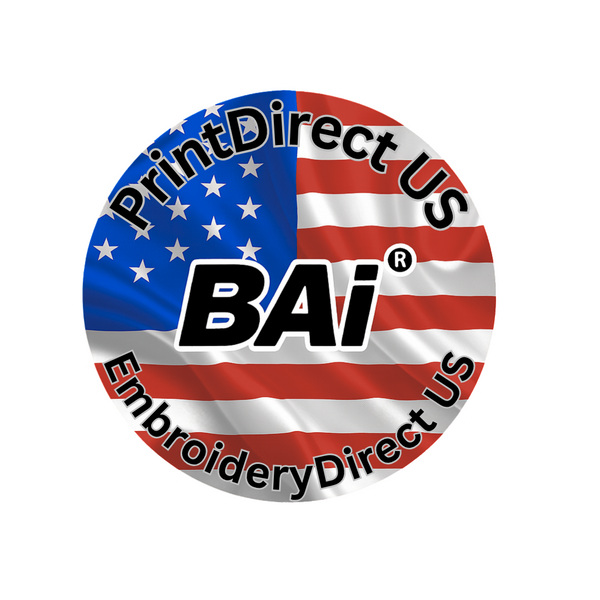
✨ Mastering Small Lettering: Tips for Clean, Crisp Embroidery
Share
Small lettering is one of the most common requests in embroidery, and also one of the most challenging. Whether you’re stitching names, logos, or detailed monograms, getting clean, legible results at a small size takes the right technique, tools, and machine settings.
At PrintDirect US, we hear this question all the time:
“Why do my small letters look messy, bunched up, or unreadable?”
Let’s break down why it happens, and how to fix it so you can produce professional-quality results, even at tiny font sizes.
🧵 Why Small Lettering Is So Tricky
Embroidery isn’t like printing, thread has thickness, fabric moves, and there’s only so much space to form each character. If you don’t account for this, small text can:
-
Lose clarity and definition
-
Pull or distort the fabric
-
Become unreadable after a few washes
-
Look uneven or bunched up
✅ Pro Tips for Embroidering Small Letters
Here are our top tips to help you master small lettering on hats, polos, bags, and more:
1. Use a Sharp Needle & Thin Thread
For small details, precision matters. Use:
-
70/10 or 65/9 needle size
-
60wt thread (thinner than standard 40wt)
This helps reduce bulk and keeps details sharp and clean.
2. Choose the Right Font
Not all fonts are embroidery-friendly, especially at small sizes. Use fonts specifically digitized for small lettering, like:
-
Block or Sans-serif fonts
-
Simple monogram styles
-
Digitized small-letter embroidery fonts (from Wilcom, Hatch, etc.)
Avoid scripts or fonts with fine curls or crossbars, they’ll get lost in the stitches.
3. Size Matters
Stay within safe size limits. As a rule of thumb:
-
Minimum height: 4–5mm (about 0.2”)
-
Anything smaller than that typically won’t stitch cleanly unless you use specialty techniques
4. Use a Stable Base
Choose a firm, high-quality stabilizer:
-
Cut-away for garments (especially knits)
-
Cap backing or tear-away for structured hats
Don’t skimp on stabilizer, it prevents fabric shifting and keeps letters aligned.
5. Digitize Properly for Small Text
This is critical. Small lettering needs:
-
Shortened stitch lengths
-
Increased pull compensation
-
Adjusted densities
-
Thinner columns in the digitizing software
If you're outsourcing your digitizing, make sure your digitizer knows it's for small text.
6. Test on Similar Material First
Always run a test stitch on similar fabric before stitching the final product. This helps catch any issues with:
-
Density
-
Legibility
-
Stabilizer compatibility
-
Thread breakage
💡 Bonus Tip: Machine Matters
Machines like the BAi Mirror or Vision are built to handle small text with precision, especially when paired with proper digitizing and training. They offer:
-
Fine tension control
-
Reliable thread trimming
-
Smooth stitching at low speeds for detail work
And at PrintDirect US, we don’t just sell the machine, we provide live virtual training so you know exactly how to get results like a pro.
